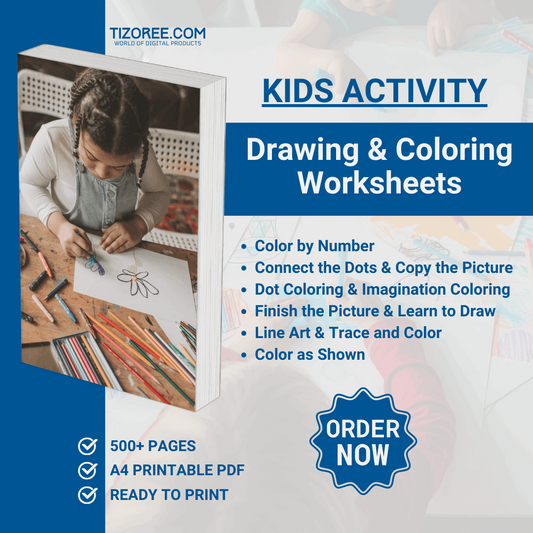Exploring the Alphabet: An Engaging Guide to Learning A to Z
Share
Learning the alphabet is a crucial step in a child's educational journey. This guide provides an interactive approach to understanding letters, colors, and their corresponding words.
Through engaging activities, children can develop their literacy skills while enjoying the colorful world of the alphabet.
The Importance of the Alphabet
The alphabet serves as the foundation for reading and writing. Understanding letters helps children recognize words, which is essential for effective communication. Additionally, the alphabet introduces kids to phonics, enabling them to decode words as they progress in their literacy skills.
Benefits of Learning the Alphabet
- Enhances reading skills
- Improves writing ability
- Boosts vocabulary development
- Encourages phonetic awareness
- Increases confidence in communication
Colors and Their Connection to the Alphabet
Colors play an important role in making learning fun and engaging for children. Associating letters with colors helps in memory retention and recognition. Each letter can be paired with a specific color, creating a visual and interactive learning experience.
Color Associations with Letters
Here is a breakdown of colors associated with each letter of the alphabet:
- A: Red
- B: Pink
- C: Blue
- D: Light Pink
- E: Sky Blue
- F: Black
- G: Purple
- H: Yellow
- I: Green
- J: Orange
- K: Light Green
- L: Red
- M: Orange
- N: Green
- O: Yellow
- P: Light Green
- Q: Black
- R: Purple
- S: Sky Blue
- T: Pink
- U: Blue
- V: Light Pink
- W: Round Color
- X: Pink
- Y: Sky Blue
- Z: Brown
Interactive Learning Through Drawing and Painting
One of the most effective ways to learn the alphabet is through drawing and painting. Children can learn to associate letters with images while expressing their creativity. This hands-on approach helps solidify their understanding of each letter and its corresponding word.
Activities to Encourage Learning
Here are some fun activities to engage children in learning the alphabet:
- Draw and color letters
- Paint objects starting with each letter
- Create flashcards with letters and colors
- Sing the alphabet song
- Play alphabet games
Exploring Phonics Through the Alphabet
Phonics is an essential skill that aids in reading and writing. By learning the sounds associated with each letter, children can decode words more easily. Introducing phonics alongside the alphabet enhances literacy development.
Phonics Connection to Letters
Each letter corresponds to a specific sound, which can be taught using simple words:
- A: Apple
- B: Ball
- C: Cat
- D: Dog
- E: Egg
- F: Frog
- G: Goat
- H: Hat
- I: Ice Cream
- J: Jack
- K: Kite
- L: Lion
- M: Monkey
- N: Nest
- O: Onion
- P: Parrot
- Q: Queen
- R: Rabbit
- S: Squirrel
- T: Tiger
- U: Unicorn
- V: Van
- W: Well
- X: X-ray
- Y: Yacht
- Z: Zebra
Numbers and Their Importance
In addition to letters, learning numbers is also crucial for children's development. Understanding numbers helps with basic math skills and everyday problem-solving. Just like with the alphabet, associating numbers with colors can make learning more engaging.
Color Associations with Numbers
Here is a list of colors associated with numbers from one to ten:
- 1: Light Green
- 2: Blue
- 3: Light Pink
- 4: Purple
- 5: Yellow
- 6: Green
- 7: Orange
- 8: Red
- 9: Black
- 10: Round Color
Conclusion: A Fun Learning Experience
Learning the alphabet and numbers can be a delightful experience for children. By incorporating colors, phonics, and interactive activities, kids can engage with their learning in a meaningful way. This holistic approach not only enhances their literacy skills but also fosters creativity and confidence.
Encouraging children to explore the alphabet and numbers through various activities ensures they develop a strong foundation for future learning. By making education fun, we can inspire a lifelong love for learning in young minds.



